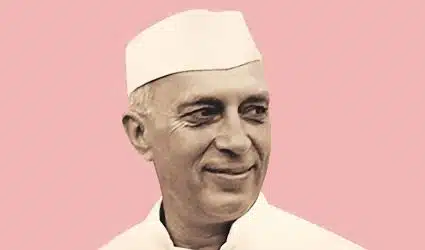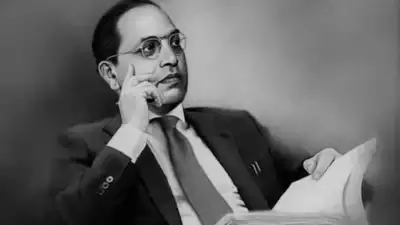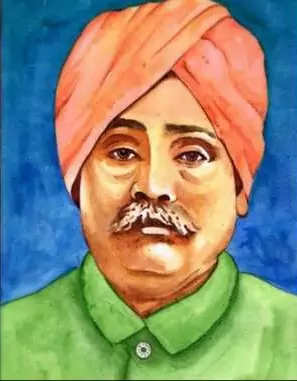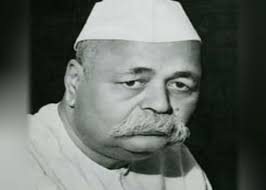Rabindranath Tagore (7 May 1861 – 7 August 1941)
Rabindranath Tagore was a Bengali polymath who worked as a poet, writer, playwright, composer, philosopher, social reformer, and painter.
He was the youngest son of Debendranath Tagore, a leader of the Brahmo Samaj, which was a new religious sect in nineteenth-century Bengal and which attempted a revival of the ultimate monistic basis of Hinduism as laid down in the Upanishads.
He was educated at home; and although at seventeen he was sent to England for formal schooling, he did not finish his studies there. In his mature years, in addition to his many-sided literary activities, he managed the family estates, a project which brought him into close touch with common humanity and increased his interest in social reforms.
He also started an experimental school at Shantiniketan where he tried his Upanishadic ideals of education. From time to time he participated in the Indian nationalist movement, though in his own non-sentimental and visionary way; and Gandhi, the political father of modern India, was his devoted friend. Tagore was knighted by the ruling British Government in 1915, but within a few years, he resigned the honour as a protest against British policies in India.
Childhood and Early Life
Rabindranath Tagore was born on 7th May 1861 to Debendranath Tagore and Sarada Devi in the Jorasanko mansion (the ancestral home of the Tagore family) in Calcutta. He was the youngest son among thirteen children. Though the Tagore family had many members, he was mostly raised by servants and maids as he lost his mother while he was still very young and with his father being an extensive traveler.
At a very young age, Rabindranath Tagore was part of the Bengal Renaissance, in which his family took active participation. He was also a child prodigy as he started penning down poems at the age of 8. He also started composing artwork at a tender age and by the age of sixteen, he had started publishing poems under the pseudonym Bhanusimha. He also wrote the short story, ‘Bhikharini’ in 1877 and the poem collection, ‘Sandhya Sangit’ in 1882.
He drew inspiration by reading the classical poetry of Kalidasa and started coming up with classical poems of his own. Some of his other influences and inspirations came from his brothers and sisters. While Dwijendranath, his elder brother, was a poet and philosopher, Satyendranath, another brother of his, was in a highly respectable position. His sister Swarnakumari was a well-known novelist.
Tagore was largely home-schooled and was trained by his siblings in the field of gymnastics, martial arts, art, anatomy, literature, history and mathematics among various other subjects. In 1873, he accompanied his father and toured the country for many months. During this journey, he accumulated knowledge on several subjects. His stay at Amritsar paved the way for him to learn about Sikhism, an experience which he would later on use to pen down as many as six poems and many articles on the religion.
Education
Rabindranath Tagore’s traditional education began in Brighton, East Sussex, England, at a public school. He was sent to England in the year 1878 as his father wanted him to become a barrister. He was later joined by some of his relatives like his nephew, niece, and sister-in-law in order to support him during his stay in England.
Rabindranath had always despised formal education and thus showed no interest in learning from his school. He was later on enrolled at the University College in London, where he was asked to learn law. But he once again dropped out and learned several works of Shakespeare on his own. After learning the essence of English, Irish and Scottish literature and music, he returned to India and married Mrinalini Devi when she was just 10 years old.
Establishment of Santiniketan
Rabindranath’s father had bought a huge stretch of land in Santiniketan. With the idea of establishing an experimental school on his father’s property, he shifted base to Santiniketan in 1901 and founded an ashram there. It was a prayer hall with marble flooring and was named ‘The Mandir.’
The classes there were held under trees and followed the traditional Guru-Shishya method of teaching. Rabindranath Tagore hoped that the revival of this ancient method of teaching would prove beneficial when compared to the modernized method.
Unfortunately, his wife and two of his children died during their stay in Santiniketan and this left Rabindranath distraught. In the meantime, his works started growing more and more popular amongst the Bengali as well as the foreign readers. This eventually gained him recognition all over the world and in 1913 Rabindranath Tagore was awarded the prestigious Nobel Prize in Literature, becoming Asia’s first Nobel laureate.
The World Tour
Since Rabindranath Tagore believed in the concept of one world, he set out on a world tour, in an attempt to spread his ideologies. He also took along with him, his translated works, which caught the attention of many legendary poets. He also lectured in countries like the United States and Japan. Soon after, Tagore found himself visiting places like Mexico, Singapore, and Rome, where he met national leaders and important personalities including the likes of Einstein and Mussolini.
In 1927, he embarked on a Southeast Asian tour and inspired many with his wisdom and literary works. Tagore also used this opportunity to discuss with many world leaders, the issues between Indians and the English. Though his initial aim was to put an end to nationalism, Rabindranath over a period of time realized that nationalism was mightier than his ideology, and hence developed further hatred towards it. By the end of it all, he had visited as many as thirty countries spread over five continents.
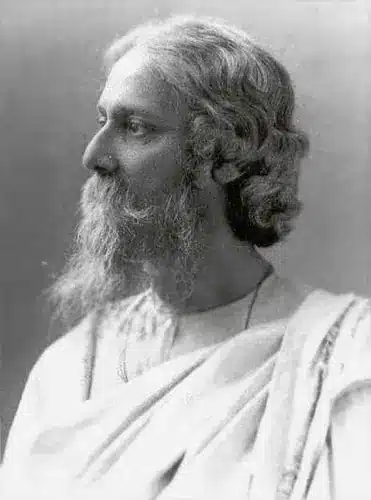
Tagore’s Views on Nationalism
Tagore opined that the term nationalism was derived from the term nation-state which was nothing but the embodiment of Western ideas of capitalism and mechanization. He believed that these ideals were intrinsically against the Indian tradition of self-autonomy, pluralism, and religious tolerance which one would find in what he termed as the samaj.
Tagore defines the nation as the political and economic union of a people and this union is the one that a whole population assumes when organized for a mechanical purpose. Commerce and science are used by nationalisms instrumentally to attain their ever-expanding power goals.
Tagore traced all the deep flaws of modern Western ‘political civilization’ back to the nexus of the political and the commercial in the apparatus of the modern state. In contrast, the defining feature of the Indian, as also of the Chinese, was for him the communities’ self-regulation of their own affairs. In fact, if his essays on nationalism and on the theme of samaj (community) are read together, a clear distinction emerges in his works between the nature of the political in the case of the nation-state and the pre-national political formations.
Ghare Baire is a story of how nationalism dismantles community life and releases the demon of ethnoreligious violence. Similarly, Char Adhyay is an early, perhaps the first exploration of the roots of industrialized, assembly line violence as a specialization of modern times.
Tagore was aware of the dangers of nationalism that was rooted in the Western concept of a nation-state. He had observed European forms of nationalism and concluded that the West had turned chauvinistic. In Europe, nationalism was a sentiment that was being promoted in order for a nation to become more powerful, especially commercially. Tagore’s brand of nationalism sought to caution against this. His thoughts on nationalism developed from his inquiry on what it meant to be human. It was rooted not in the power that commerce could bring to Western political civilizations but in human agency and its traditions that emphasized tolerance that Indian civilizations used to be characterized by.
In Europe, where peoples had their racial unity from the beginning, and where natural resources were insufficient for the inhabitants, the civilization has naturally taken the character of political and commercial aggressiveness. On the one hand, they had no internal complications, and on the other, they had to deal with neighbours who were strong and rapacious. To have a perfect combination among themselves and a watchful attitude of animosity against others was taken as the solution to their problems. In former days they organized and plundered, in the present age the same spirit continues—and they organize and exploit the whole world.
Tagore saw Japan as a symbol of hope as well as caution. Japan being an Asian nation had reinvented itself to become a force to reckon with. It became an example for other Asian nations and broke the myth that only Western nations were capable of modernization. However, Tagore also expressed a note of caution saying that the method by which Japan achieved this transformation was similar to that of other Western nations that followed a form of aggressive nationalism which he believed was corrosive and characteristic of nationalism in the 20th century.
We can also derive clues on Tagore’s understanding of nationalism through his understanding of cultural unity. Unlike many 19th-century thinkers like Ram Mohan Roy, Swami Vivekananda and Sri Aurobindo who rooted Indian cultural unity in canonical texts, Tagore believed that religious texts could be central to classical Indian culture but not to Indian cultural unity which had to be rooted in temporal ideas.
Tagore’s perception of nationalism has mainly relied on ancient Indian philosophy, where the world was accepted as a single nest. In this way, Tagore was striving to dissociate himself from the general belief of nationalism and trying to associate it with ideas such as peace, harmony and welfare. He argues further that if any way, India decides to contribute to the world; it should be only in the form of humanity.
Political Views
Though Tagore denounced nationalism, he also vouched for the Indian independence through some of his politically charged songs. He also supported Indian nationalists and publicly criticized European imperialism. He also criticized the education system that was forced upon India by the English. In 1915, he received knighthood from the British Crown, which he later renounced citing the massacre held at Jallianwala Bagh. He said that the knighthood meant nothing to him when the British failed to even consider his fellow Indians as humans.
Literary Works
During his lifetime, Rabindranath Tagore wrote several poems, novels, and short stories. Though he started writing at a very young age, his desire to produce more literary works only enhanced post the death of his wife and children. Some of his literary works are mentioned below:
- Short stories – Tagore began to write short stories when he was only a teen. He started his writing career with ‘Bhikharini’. During the initial stage of his career, his stories reflected the surroundings in which he grew. He also made sure to incorporate social issues and problems of the poor man in his stories. He also wrote about the downside of Hindu marriages and several other customs that were part of the country’s tradition back then. Some of his famous short stories include ‘Kabuliwala’, ‘Kshudita Pashan’, ‘Atottju’, ‘Haimanti’ and ‘Musalmanir Golpo’ among many others stories.
- Novels – It is said that among his works, his novels are mostly under-appreciated. One of the reasons for this could be his unique style of narrating a story, which is still difficult to comprehend by contemporary readers, let alone the readers of his time. His works spoke about the impending dangers of nationalism among other relevant social evils. His novel ‘Shesher Kobita’ narrated its story through poems and rhythmic passages of the main protagonist. He also gave a satirical element to it by making his characters take jibes at an outdated poet named Rabindranath Tagore! Other famous novels of his include ‘Noukadubi’, ‘Gora’, ‘Chaturanga’, ‘Ghare Baire’ and ‘Jogajog’.
- Poems – Rabindranath drew inspiration from ancient poets like Kabir and Ramprasad Sen and thus his poetry is often compared to the 15th and 16th Century works of classical poets. By infusing his own style of writing, he made people to take note of not only his works but also the works of ancient Indian poets. Interestingly, he penned down a poem in 1893 and addressed a future poet through his work. He urged the yet to be born poet to remember Tagore and his works while reading the poem. Some of his best works include ‘Balaka’, ‘Purobi’, ‘Sonar Tori’ and ‘Gitanjali’.
Tagore’s Stint as an Actor
Tagore wrote many dramas, based on Indian mythology and contemporary social issues. He began his drama works along with his brother when he was only a teen. When he was 20 years old, he not only did pen the drama ‘Valmiki Pratibha’, but also played the titular character. The drama was based on the legendary dacoit Valmiki, who later reforms and pens down one of the two Indian epics – Ramayana.
Tagore the Artist
Rabindranath Tagore took up drawing and painting when he was around sixty years old. His paintings were displayed at exhibitions organized throughout Europe. The style of Tagore had certain peculiarities in aesthetics and coloring schemes, which distinguished it from those of other artists.
He was also influenced by the craftwork of the Malanggan people, belonging to the northern New Ireland. He was also influenced by Haida carvings from the west coast of Canada and woodcuts by Max Pechstein. The National Gallery of Modern Art in New Delhi houses as many as 102 art works of Tagore.
Adaptations of Tagore’s Works
Many of his novels and short stories were made into films by the renowned filmmaker Satyajit Ray. Other filmmakers too, over the years, have drawn inspiration from his works and have incorporated his stories into their movies. As many as 39 stories of his were made into films by various directors and a few other stories were made into TV series. Some of the recent movie adaptations include ‘Detective’, ‘Postmaster’, ‘Jogajog’, ‘Shesher Kabita’ and ‘Tasher Desh.’
Last Days & Death
Rabindranath Tagore spent the last four years of his life in constant pain and was bogged down by two long bouts of illness. In 1937, he went into a comatose condition, which relapsed after a period of three years. After an extended period of suffering, Tagore died on August 7, 1941, in the same Jorasanko mansion in which he was brought up.
Legacy
Since Rabindranath Tagore changed the way Bengali literature was viewed, he left an everlasting impression on many. Apart from many of his busts and statues that have been erected in many countries, many yearly events pay tribute to the legendary writer. Many of his works were made international, thanks to a host of translations by many famous international writers. There are five museums dedicated to Tagore. While three of them are situated in India, the remaining two are in Bangladesh. The museums house his famous works and are visited by millions every year.
Also refer :
- Indian National Congress Sessions
- Important Social Reforms Acts Of British India
- 20 Lesser-Known Indian Freedom Fighters
- August Offer| Cripps Mission| C R Formula| Wavel Plan| Cabinet Mission| Mountbatten Plan
- Important Books And Authors Of India
- Indian Independence Movement| Top 25 Important MCQs
- Indian National Congress Sessions Before Independence
- Download the pdf of Important MCQs From the History Of Ancient India
- भारतीय राष्ट्रीय आंदोलन के महत्वपूर्ण व्यक्तित्व
- Difference Between Non-Co-Operation Movement And Civil Disobedience Movement
- Indian Independence Movement| Top 25 Important MCQs
- Important Battles/Wars Of India
- 20 Lesser-Known Indian Freedom Fighters
- Governors-General And Viceroys Of India

